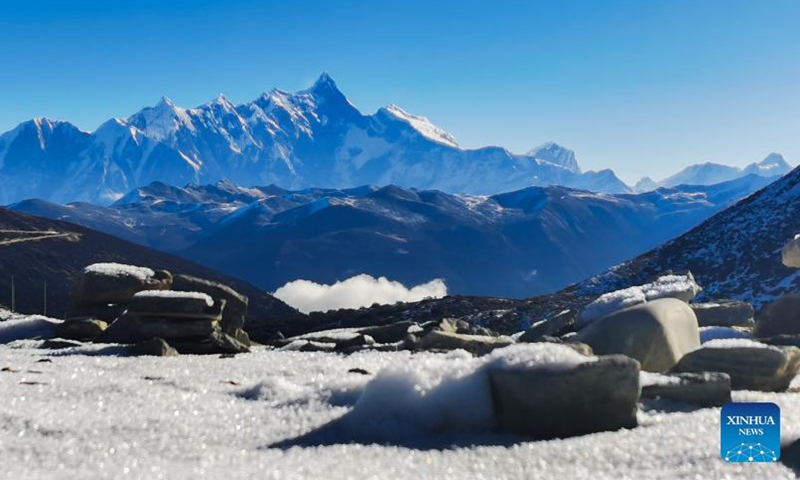
Photo taken on Dec 16, 2021 with a mobile phone shows Mount Namjagbarwa in Nyingchi, southwest China's Tibet Autonomous Region.Photo:Xinhua
China's Ministry of Civil Affairs announced that it had standardized in Chinese characters, Tibetan and Roman alphabet the names of 15 places in Zangnan (the southern part of China's Xizang), in accordance with regulations on geographical names issued by the State Council, China's cabinet.
Among the official names of the 15 places, which were given precise coordinates, eight are residential areas, four are mountains, two are rivers and one is a mountain pass.
This is the second batch of standardized names of places in Zangnan given by the ministry. The first batch of the standardized names of six places in Zangnan was released in 2017.
Lian Xiangmin, an expert with the China Tibetology Research Center in Beijing, told the Global Times on Thursday that it is part of a national effort to standardize the management of place names. The places have existed for hundreds of years.
It is a legitimate move and China's sovereign right to give them standardized names. More standardized place names in the region will be announced in the future, Lian noted.
Zhang Yongpan, a research fellow of the Institute of Chinese Borderland Studies under the Chinese Academy of Social Sciences, explained that most areas in Zangnan were named by the central and local governments throughout history, as well as ethnic groups such as the Tibetan, Lhoba, and Monba who have long lived in the region. After the Zangnan area was illegally occupied by India, the Indian government has also established some illegal names in the area.
"The right to name places in the region should belong to China," said Zhang, who has been to the illegal "McMahon Line" many times and published a number of historical and geographical research articles on the China-India border.
Zhang pointed out that standardizing names of places in Zangnan, and the adoption of China's first national law on the protection and exploitation of land border areas, are important moves made by the country to safeguard national sovereignty, better maintain national security and manage border-related matters at the legal level amid regional tensions, including frictions with India.
The Land Border Law, approved at the closing meeting of a legislative session of the Standing Committee of the National People's Congress on October 23, will take effect on Saturday (January 1, 2022).
The expert also noted that compared with the first batch, the ministry covered more places this time, including residential areas, rivers and mountain passes.
The eight residential places in the second batch are Sêngkêzong and Daglungzong in Cona County of Shannan Prefecture, Mani'gang, Duding and Migpain in Medog County of Nyingchi, Goling, Damba in Zayu County of Nyingchi, and Mêjag in Lhunze County of Shannan Prefecture.
The four mountains are Wamo Ri, Dêu Ri, Lhünzhub Ri and Kunmingxingzê Feng.
The two rivers are Xênyogmo He and Dulain He, and the mountain pass is named Sê La, in Cona County.
The Chinese Foreign Ministry had said in 2017, when the first batch of names in the region was released, that China's territorial claims in the Zangnan region have a historical and administrative basis. The Chinese government has never recognized the so-called "Arunachal Pradesh," as it's called by India.




